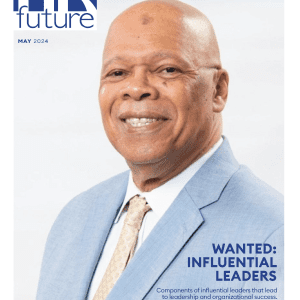Create a service culture to engage your talent.
What determines the success of talent engagement in organisations? Engaging talent can be a daunting and challenging task for most practitioners and organisation. Talent engagement involves the effort to clearly understand and explain the relationship between talent and the organisation. It also explains to which extent talent is passionate about their jobs and able to put in discretionary effort combined with both emotional and rational commitment to the organisation as well as establishing the sense of belonging to the organisation.
We often hear from all corners that talent is our biggest and most valuable asset. But to what extent do we mean that? It goes back to the ultimate objective of why we are engaging talent, be it for brand reputation, cost reduction or creating a happy and engaged environment for the talent.
The ultimate objective that most organisations fail to achieve and focus on is the human touch in engagement. The key intention of serving and helping talent needs to be embedded as part of organisation culture and core values. To hit the chord right and even before the planning stage of the engagement efforts take place, one needs to have clear intention on the purpose of engaging talent, and strongly implant the service minded culture.
A service culture serves as the foundation for any talent engagement methodology and practice. The key question is: how do we inject and align this service culture mindset? What difference does it make comparing two talent engagement practitioners, one with a service focus and one without it? A simple example is doing an on-boarding for employees. Do we focus on the process and checklist or more on the people and concern ourselves about them settling down and being comfortable in the organisation? Some may even consider having a pre-onboarding in order to create more of a focus on the comfort and engagement of new joiners. The aim is to show and ease their entry into the organisation as much as we can.
Another example is the “Voice of Employees” that would be a great way of designing and implementing this effort aiming at understanding what’s in the mind of employees. Do we map a process with high priority encouraging the employee to come forward and reward them accordingly or mould things to suit HR or engagement teams’ way of operating? What is the mechanism to establish the above two engagement efforts? Also, to which extent is the top management involved in this drive? In terms of business criticality of the interventions, where can we rate it ranging from 1- 10 with 1 being the lowest and 10 the highest?
Is this effort part of the organisation culture and integrated in the business plan or is it a stand-alone project aiming at hitting certain figures and goals?
The diagram (on the previous page) is self-explanatory and is a guideline in establishing engagement efforts in an organisation.
Based on my personal experiences, besides establishing the pillars of talent engagement, namely communication, motivation, recreation and bonding, the essential component is the key outcome of each and every activity with a structured success measure. On top of that, what are the measuring tools for engagement success besides the NPS score and Glassdoor feedback? Are these efforts linked with the talent and business strategy and what determines the quality and timely deliverables?
Another important question is: how do we gather what’s in the mind of the employees besides the annual organisation climate survey? The next question is: what remedies and action plan do we take to implement and rectify key concerns of the employees highlighted in the survey or is it merely a number being shared with the management team? Almost every organisation conducts hiring interviews and exit interviews, but how many of us out there consider running a stay interview? We press the panic button when key employees choose to leave the organisation. Why not understand them and their needs while they are still in the organisation? What’s the hindrance for us to march forward with this effort? On top of that, where does the exit interview summary sit?
Once, I experienced an organisation implementing too many events and engagement activities and with that came mandatory attendance and active participation despite several rejections by employees. Both the management and organising team were more concerned about hitting the number and presenting it in an impressive visual outcome instead of making it more absorbable and enjoyable by the employees. Can we say the more activities, the merrier it is? Which one is applicable in this situation having the most number of engagement efforts with a high level of participation or having a variety of efforts and leave it to the employee to decide which interests them and work on it accordingly? Who is the decision maker to select and implement these interventions? What triggers the need for such engagement efforts?
The next point to look at is digitalisation in engagement. With digitalisation becoming the hot topic on social media, many organisations are jumping onto the bandwagon for a fullfledged implementation. Do we create a wider gap between employees and our interventions with a fully automated system or does it support engagement?
Also, with the global workforce trend skewed more towards the younger generation dominating the workforce, are our efforts tailored towards their needs and expectation or are we still working on something which we believe is good for them? What are the expected outcomes of engagement efforts and what clearly determines the need for each especially in catering for the younger generation? At the same time, how do we include and best utilise the Baby Boomers who are almost at the exit door of their careers. Are organisations more keen on keeping up with the latest trends and technology or is the highlight more on the talent? Its talent versus the technology trend. Do we say, ‘Yes,’ we are on par with international standards and show the rest of the world where we are and what we have or do we place more emphasis on empowering, engaging and, most essentially, listening to the employee voice, and implement and measure their fulfilling efforts. I firmly believe the latter makes more impact on the business and the talent. I’m not sure how many of you would agree with this.
Let’s embrace change with a 100% clear intention and serve the talent around us. To be successful, the mind, the heart and our hands should synchronise and move in the same direction. First comes the talent, then the technology and then the trend, so let’s engage and empower our valuable talent.
Prakash Santhanam is a highly experienced Malaysia-based Global Talent Management practitioner specialising in Learning and Capability Management, Talent Engagement, Performance Management and Resourcing in Asia, Middle East and Africa.






















